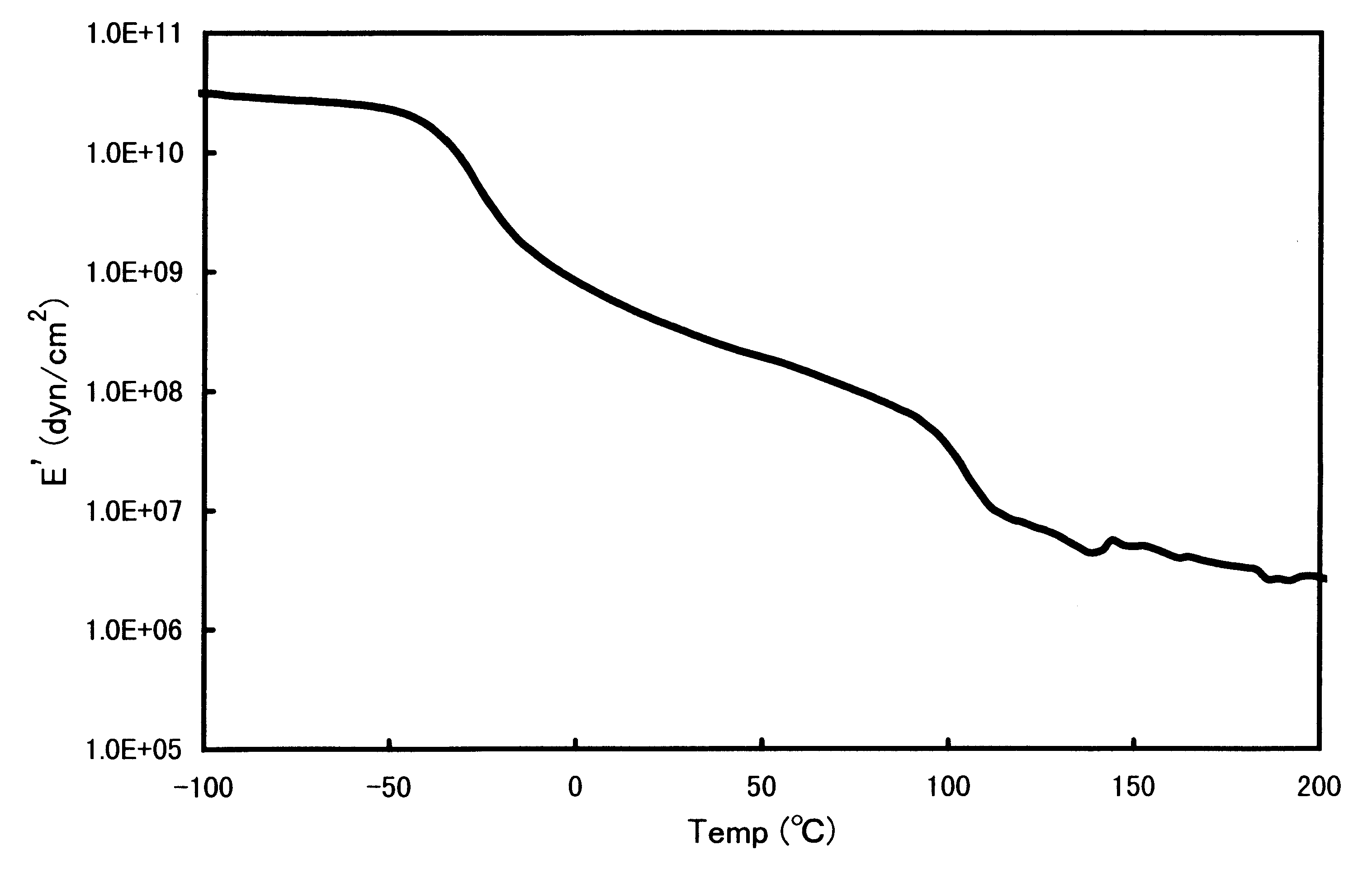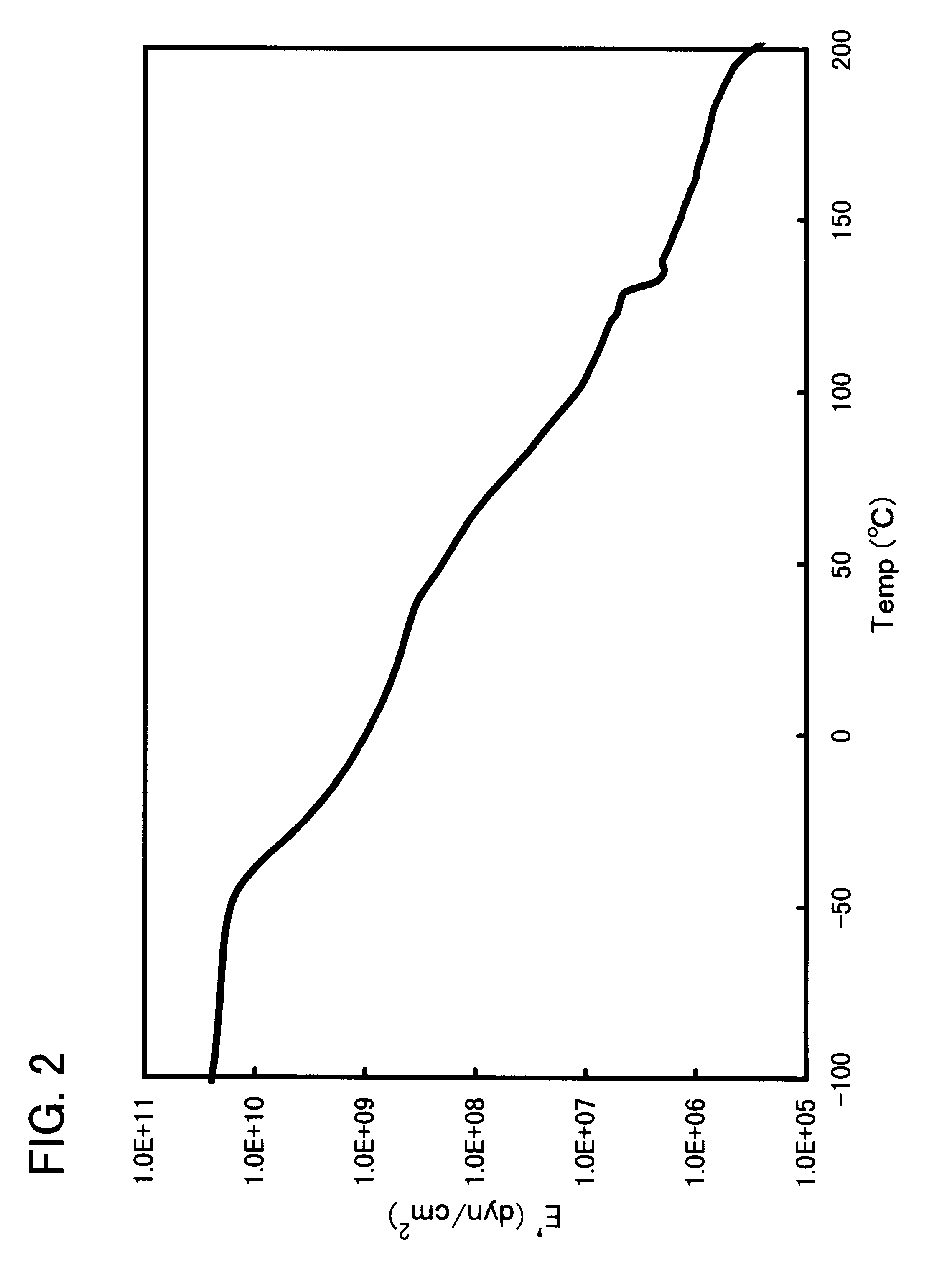Block copolymer and polymer composition comprising the same
a technology of copolymer and polymer composition, which is applied in the field of new block copolymer and copolymer composition comprising the same, can solve the problems of poor weather resistance and solvent resistance of styrene-based tpe, insufficient compatibility and adhesion to polar polymers such as acrylic resin, and poor weather resistance of tp
- Summary
- Abstract
- Description
- Claims
- Application Information
AI Technical Summary
Problems solved by technology
Method used
Image
Examples
example 1
[Preparation example of a triblock copolymer composed of (hydrogenation product of polybutadiene having a low 1,2-bond content)-(hydrogenation product of polybutadiene having a high 1,2-bond content)-(poly(methyl methacrylate))]
In a 1-liter autoclave internally purged with nitrogen, 55 g of the block copolymer obtained in Referential Example 1 was dissolved in 520 g of deaerated and dehydrated toluene. To the resulting solution, 3.2 g of a 1:3 (molar ratio) mixture of nickel octylate and triisobutylaluminum was added as a hydrogenation catalyst, followed by heating to 80.degree. C. The system was fed with a hydrogen gas until it amounted to 10 kg / cm.sup.2. Under those conditions, the reaction was effected for 10 hours.
The hydrogenation was terminated by the addition of 8 g of a 30 wt. % aqueous hydrogen peroxide solution and 8.6 g of citric acid. The reaction mixture was then washed twice each with 800 g of distilled water. The polymer solution thus obtained was poured into 8000 g o...
referential example 2
[Preparation example of a triblock copolymer composed of (polybutadiene having a low 1,2-bond content)-(polyisoprene)-(poly(methyl methacrylate))]
In a 1-liter autoclave internally purged with nitrogen, 270 g of deaerated and dehydrated methylcyclohexane and 0.072 g of s-BuLi were charged, followed by the addition of 7 g of 1,3-butadiene. The resulting mixture was heated to 40.degree. C. at which polymerization was effected for 3 hours. A portion of the resulting polymer was sampled and subjected to GPC and NMR analysis. As a result, it was found that polybutadiene having a low 1,2-bond content whose Mn was 6200, Mw / Mn was 1.08 and 1,2-bond content was 6% was formed.
After completion of the above polymerization, 56 g of isoprene was charged in the system and polymerization was conducted at 40.degree. C. for 3 hours. A portion of the resulting polymer was sampled and subjected to GPC and NMR analysis. As a result, it was found that a polyisoprene block having Mn of 49500 and Mw / Mn of 1...
example 2
[Preparation example of a triblock copolymer composed of (hydrogenation product of polybutadiene having a low 1,2-bond content)-(hydrogenated polyisoprene)-(poly(methyl methacrylate))]
In a 1-liter autoclave internally purged with nitrogen, 55 g of the block copolymer obtained in Referential Example 2 was dissolved in 520 g of deaerated and dehydrated toluene. To the resulting solution, 2.8 g of a 1:3 (molar ratio) mixture of nickel octylate and triisobutylaluminum was added as a hydrogenation catalyst, followed by heating to 80.degree. C. A hydrogen gas was then fed to the system to 10 kg / cm.sup.2. Reaction was effected for 14 hours under those conditions.
By the addition of 7 g of a 30 wt. % aqueous solution of hydrogen peroxide and 7.4 g of citric acid, the hydrogenation was terminated. The reaction mixture was washed twice each with 800 g of distilled water. The resulting polymer solution was poured into 8000 g of methanol to solidify the polymer and the solidified polymer was col...
PUM
| Property | Measurement | Unit |
|---|---|---|
| Temperature | aaaaa | aaaaa |
| Fraction | aaaaa | aaaaa |
| Fraction | aaaaa | aaaaa |
Abstract
Description
Claims
Application Information
 Login to View More
Login to View More - R&D
- Intellectual Property
- Life Sciences
- Materials
- Tech Scout
- Unparalleled Data Quality
- Higher Quality Content
- 60% Fewer Hallucinations
Browse by: Latest US Patents, China's latest patents, Technical Efficacy Thesaurus, Application Domain, Technology Topic, Popular Technical Reports.
© 2025 PatSnap. All rights reserved.Legal|Privacy policy|Modern Slavery Act Transparency Statement|Sitemap|About US| Contact US: help@patsnap.com



